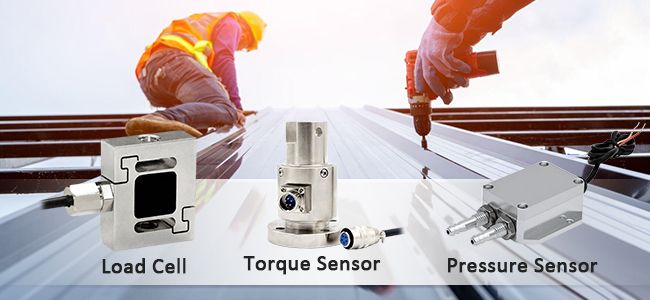Force & Pressure
Compression Type Load Cell, 300kg-100 ton
Digital Load Cell Amplifier, 4-20mA/0-10V/RS485 Output
Digital Pressure Transmitter for Hydraulic/Oil/Air
Display Controller for Load Cells, 6 Digit
Dual Flange Reaction Torque Sensor, 20-100000 Nm
Half Bridge Foil Type Strain Gauge
HVAC Differential Pressure Transmitter, 4-20mA
Miniature Tension and Compression Load Cell, 1kg~500kg
Ring Type Compression Force Sensor, 0.5kN-200kN
S Shaped Load Cell, 1kg-7 ton
Circular Diaphragm Strain Gauge
Compression Load Cell for Weight Measurement, 300kg-30 ton
High Accuracy Differential Pressure Transducer, 4-20mA HART
Load Cell Transmitter, 4-20mA/0-5V/0-10V Output
Micro Static Torque Sensor with Aviation Plug, 20/50/100/200 Nm
Mini Tension and Compression Load Cell, Stainless Steel
Pressure Sensor with Digital Display, 10/100/3000/5000 PSI
S Type Load Cell for Tension/Compression, 5kg-20 ton
Thin Film Force Sensor, 2.5kg-50kg
Accurate Tension and Compression Load Cell, 100kg~20 ton
Force sensors and pressure sensors are indispensable components in modern industrial automation and intelligent measurement and control systems. They play a critical role in various fields such as mechanical manufacturing, aerospace, medical equipment, automated production lines, and intelligent robots. Although their names are similar, force sensors and pressure sensors differ in their working principles and application scenarios. However, their core objective is the same: to convert physical quantities into readable electrical signals, thereby enabling precise measurement of mechanical quantities.
Force sensors are primarily used to measure physical forces such as thrust, tension, shear force, or torque acting on an object. Common types include load cells, strain-gauge force sensors, capacitive force sensors, and piezoelectric force sensors.
Among these, strain gauge force sensors are widely adopted due to their simple structure, wide measurement range, and sensitive response. They work by attaching strain gauges to an elastic body. When an external force acts on the elastic body, the resulting deformation causes a change in the resistance of the strain gauges, thereby outputting an electrical signal proportional to the external force. Such sensors are commonly used in applications such as mechanical structure stress analysis, automotive crash testing, and robotic gripping force control.
Load cells are devices that convert gravitational force (mass) into measurable electrical signals, commonly used in electronic scales, industrial weighing systems, and hopper metering applications. They detect the minute deformation caused by the force applied to an object through strain gauges, enabling high-precision weight measurement.
Pressure sensors are specifically designed to detect the vertical force exerted by gases or liquids on container walls, with primary measurement units being Pascal (Pa) or bar (bar). Based on operating principles, pressure sensors are categorized into piezoresistive, piezoelectric, capacitive, and fiber optic types. Piezoresistive pressure sensors are the most common type, featuring an internal pressure-sensitive membrane that undergoes microscopic deformation when pressurized, resulting in a change in resistance and outputting analog or digital signals. They are widely applied in hydraulic systems, fluid control, gas leakage monitoring, medical ventilators, and other applications.

In industrial applications, users should select appropriate force or pressure sensors based on parameters such as measurement range, output format (e.g., 4-20 mA, 0-10V, RS485), supply voltage, accuracy grade, and installation method. For example, in high-precision laboratory environments, sensors with an error margin of ±0.1% or less are recommended; in harsh industrial settings, waterproofing, dustproofing, and vibration resistance must be considered.
To meet the specialized and diverse sensor requirements of different industrial sectors, the SUCH Shop offers a wide range of high-performance force and pressure sensor products. Whether it's load cells, strain gauge-based tension/compression sensors, dynamic force measurement modules, miniature pressure sensors, or diaphragm-type pressure transmitters, we provide extensive selection options, precise parameters, reliable performance, and support for multiple signal outputs and customization services, enabling users to seamlessly integrate them into PLCs, DCS systems, or embedded systems. The platform also features detailed technical documentation, selection guides, and engineering application cases to facilitate rapid deployment by engineers.
Force sensors and pressure sensors serve as the critical bridge linking the physical world with digital systems, playing a central role in modern industry and smart devices. Selecting high-quality sensors not only enhances system stability but also ensures production safety and efficiency.















































































